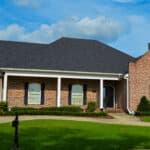7 Ways Fiberglass Roofs Improve Home Efficiency
Every month, the utility bill arrives. It’s higher than expected, again. You’ve replaced windows, added insulation, sealed cracks, and still, your home feels too warm in summer and too cold in winter.
If this sounds familiar, your roof may be the missing link. More specifically, the type of roofing material you’ve chosen could be silently working against your efforts to improve efficiency. This is where fiberglass roofs come in.
Switching to fiberglass roofs doesn’t just mean getting a new top layer, it means improving your entire home’s performance. From thermal control to energy cost savings, fiberglass shingles are designed for more than just curb appeal.
Here are seven powerful ways this material can transform the way your home uses energy.
Fiberglass Roofs Help Regulate Indoor Temperature
One of the most overlooked aspects of home energy efficiency is the role the roof plays in thermal transfer.
Fiberglass shingles are constructed with a glass fiber base mat that offers excellent insulation properties. This composition helps block heat in the summer and retain warmth in the winter.
When your attic stays cooler or warmer as needed, your HVAC system doesn’t have to work as hard. Less energy used means more money saved.
Lightweight Material Lowers Structural Stress
Weight might not seem like a factor in energy efficiency, but it is, indirectly.
Traditional roofing materials like slate or clay add considerable stress to your home’s structure. That can lead to increased maintenance and hidden inefficiencies in insulation or airflow.
In contrast, fiberglass roofing is lightweight. This reduces strain on the overall building frame and supports better long-term sealing and ventilation throughout your attic and upper levels.
A well-ventilated attic doesn’t trap heat or moisture, both of which can spike energy usage if left unchecked.
Reflective Coating Options Reduce Solar Heat Absorption
Many homeowners don’t realize how much heat their roof absorbs from the sun every day. That absorbed heat radiates into your home, increasing your reliance on air conditioning.
But fiberglass shingles are available with reflective coatings or “cool roof” technology, which reflect more of the sun’s rays than darker, older shingles.
This reflectivity significantly reduces the surface temperature of your roof, often by 20 to 40 degrees, translating to cooler interiors and lower cooling costs.
Long-Term Durability Means Fewer Repairs and Energy Leaks
Efficiency isn’t just about how well something performs today, it’s about how consistently it performs over time.
Fiberglass shingles resist warping, cracking, and moisture damage better than organic-based shingles. They don’t easily absorb water, and they maintain their shape even under intense weather conditions.
This reliability means fewer gaps, fewer leaks, and less opportunity for hot or cold air to escape your home.
Durability also means less frequent replacement, which is a savings in both materials and the energy cost of production and transport, an often-overlooked aspect of environmental efficiency.
Better Fire Resistance Improves Overall Safety
It’s not just about energy, it’s also about peace of mind.
Fiberglass shingles carry a Class A fire rating, the highest in the industry. This reduces the risk of house fires caused by stray embers or external sparks, especially in wildfire-prone areas.
When combined with proper insulation and attic sealing, this fire resistance contributes to a more secure, efficient home envelope. Fires not only pose physical danger, they disrupt your home’s entire energy balance through smoke, air leakage, and structural compromise.
Easier Integration with Solar Panel Systems
As more homeowners consider solar panels, the type of roofing material becomes crucial.
Fiberglass roofs provide a smooth, even surface that makes solar panel installation easier and more secure. Their durability also ensures the panels won’t outlast the roof, preventing the cost of removing and reinstalling solar systems mid-lifespan.
Additionally, some fiberglass shingles are designed to complement or work alongside photovoltaic shingles, blending traditional and solar technology without sacrificing appearance or performance.
This makes fiberglass a future-ready option for those looking to reduce grid dependency and boost efficiency through renewable energy.
Environmentally Friendly Manufacturing Reduces Carbon Footprint
Most homeowners don’t think about what goes into the materials they use, but sustainability starts long before the installation.
Fiberglass shingles require less asphalt than their organic counterparts and produce less waste during manufacturing. They’re also recyclable in some regions, further reducing environmental impact.
Choosing a roof that performs efficiently and is made responsibly contributes to a full-circle sustainability strategy.
If your goal is to make your home more efficient, reducing its environmental burden should be part of the plan, and fiberglass supports that goal better than many alternatives.
The Value Beyond Utility Bills
It’s easy to measure efficiency in dollars. And yes, fiberglass roofs will likely reduce your energy bills over time.
But efficiency also shows up in comfort. A well-sealed, temperature-balanced home feels better to live in. You’ll sleep more soundly, worry less about maintenance, and enjoy the confidence of knowing your house is built to last.
These are the quiet benefits. The ones that don’t arrive on a statement each month, but show up in your day-to-day experience.
Getting Started: What to Expect
If you’re considering a roof upgrade, your first step should be speaking to a qualified professional.
A trusted Roofing Company in NOLA can evaluate your current roofing system, explain your options in plain terms, and help you determine whether fiberglass shingles are right for your home.
They’ll also help ensure correct installation, because even the best materials won’t perform if they’re installed poorly.
Final Thoughts
A roof isn’t just a cover. It’s a system that supports insulation, airflow, and climate control.
When you choose fiberglass shingles, you’re choosing performance that goes deeper than appearance. You’re choosing a home that stays cooler, lasts longer, and costs less to run.
Not every upgrade delivers this kind of payoff. But in this case, the return is clear, because better roofing means a better home, in every season.
If efficiency is your goal, fiberglass roofs are the foundation you’ve been looking for.




